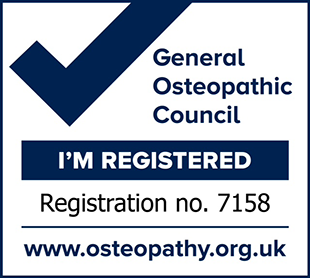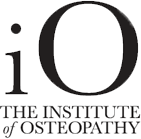Calcaneal Apophysitis, (Sever’s Disease)
Calcaneal apophysitis is an Osteopathic condition, otherwise known as Sever’s disease. It is a painful condition that occurs in the heel bone, (calcaneus) in patients, generally between the ages of 10 to 15 years of age. Calcaneal apophysitis is a disease of the growth plate of the bone.
As babies, most of our bones are made up of cartilage. The bones have what is known as a growth plate. It is from this growth plate that each bone continues to form eventually becoming adult bones. That is why a calcaneal apophysitis is seen during development at ages 10-15; this is just before the bones fuse and finalise in their appearance.
This type of condition is not limited to the heel bone. The achilles tendon attaches into the back portion of the heel bone. It is thought that the tension created by the achilles tendon on that portion of bone ‘pulls’ that section of bone away from the remaining section of heel bone at the level of the growth plate and thus creates pain. Because of this mechanism, this condition is also known as a traction apophysitis.
Typically, the young patient will complain of pain on the inside and outside of the heel bone. Pain may not usually be evident on the bottom of the heel as seen in conditions, such as heel spurs and plantar fasciitis. The area indeed may be very tender and pain may occur in either one or both heels.
Patients referred for Osteopathy are usually athletic, playing a sport that requires running and jumping on hard surfaces. It is this excessive strain on the heel and the achilles tendon that sets this off. Infact, many patients report no pain in the heel until the sporting season began! The pain is purported to be worse during activity and better with rest.
One of the things that is often overlooked is the type of athletic shoe worn by the young athlete. An adolescent athlete may be heavy and strong enough to drive the cleats in the heel of the shoe into the ground, but not the cleats or studs in the forefoot which remain on top of the ground. This creates a relative dorsiflexion of the foot to the ankle and will increase the tension on the achilles tendon resulting in apophysitis. Orthotics should help negate this situation.
Additionally, an Osteopath may also advise that the athletic shoes worn by the child are too worn out in the heel area. This will also create relative dorsiflexion of the foot on the ankle. Needless to say, replacing worn out athletic shoes may also go a long way to reduce the strain on the achilles tendon at the heel bone.
Flat, pronated feet may also cause torsion in the achilles tendon and place in under increased tension and stress, leading to exacerbation of the patient’s symptoms. This may also then contribute to over compensation elsewhere, leading to knee and lower back pain! Orthotics would also help negate this problem.
Diagnosis is made by Osteopathic consultation, which includes taking a case history and conducting clinical examinations. X-rays should be taken to rule out a fracture in the area, but the growth plate would look the same with or without this condition. Some Osteopathic clinicians feel that the growth plate will look at bit more jagged than a normal heel, but this interpretation is very subjective and not reliable.
Walking on an injured area tends to delay healing so the pain of an apophysitis may linger. As much as the child does not want to hear it, in many cases rest is necessary to reduce the pain. The Sports Injuries Specialist – Registered Osteopath, taping the heel may still however enable the child to compete at a competitive level. Orthotics may also facilitate a reduction in pain and discomfort for the child. In any event, a calcaneal apophysitis is a self-limiting condition and will eventually resolve itself. The only variable is how long it will take in a given individual.
TREATMENT:
Foot Pain_Heel Pain_Orthotics. Treatment At Harrow Osteopaths_Wembley Osteopaths_Chelsea Osteopaths_Orthotics by The Sports Injuries Specialist – Registered Osteopath. Regulated: Harrow Osteopaths, Wembley Osteopaths, Chelsea Osteopaths – The Sports Injuries Specialist – Registered Osteopath. How Foot Pain_Heel Pain is treated at Harrow Orthotics, Wembley Orthotics, Chelsea Orthotics by The Sports Injuries Specialist – Registered Osteopath. Foot conditions are treated with gentle, non-invasive techniques designed to help improve blood circulation and drainage of waste products/accumulated toxins.
If you have any Foot Pain/Heel Pain, or your symptoms persist, then please call the Sports Injuries Specialist – Registered Osteopath – Harrow Orthotics, Wembley Orthotics, Chelsea Orthotics immediately for exceptional results:
ZAHIR A CHAUDHARY, BA (Hons), BSc (Hons), ND, M Ost. Med
EMAIL: emergencyosteopath@gmail.com
24HR MOB: 0792 100 4705
WEB: www.sportsinjuriesspecialist.co.uk
HARROW OSTEOPATHIC CLINIC, 9 LITTLETON RD, HARROW, MIDDLESEX. HA1 3SY.
FITNESS FIRST OSTEOPATHS, 197 EALING RD, THE ATLIP CENTRE, ALPERTON, WEMBLEY, MIDDLESEX. HA0 4LW.
WEMBLEY OSTEOPATHS, 31 NORVAL ROAD, NORTH WEMBLEY, MIDDLESEX. HA0 3TD.
CHELSEA OSTEOPATHS, 208 FULHAM ROAD, CHELSEA, LONDON. SW10 9PJ.
Leave a reply →

